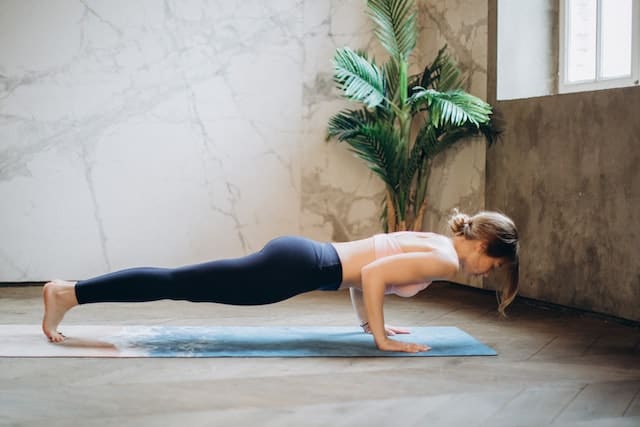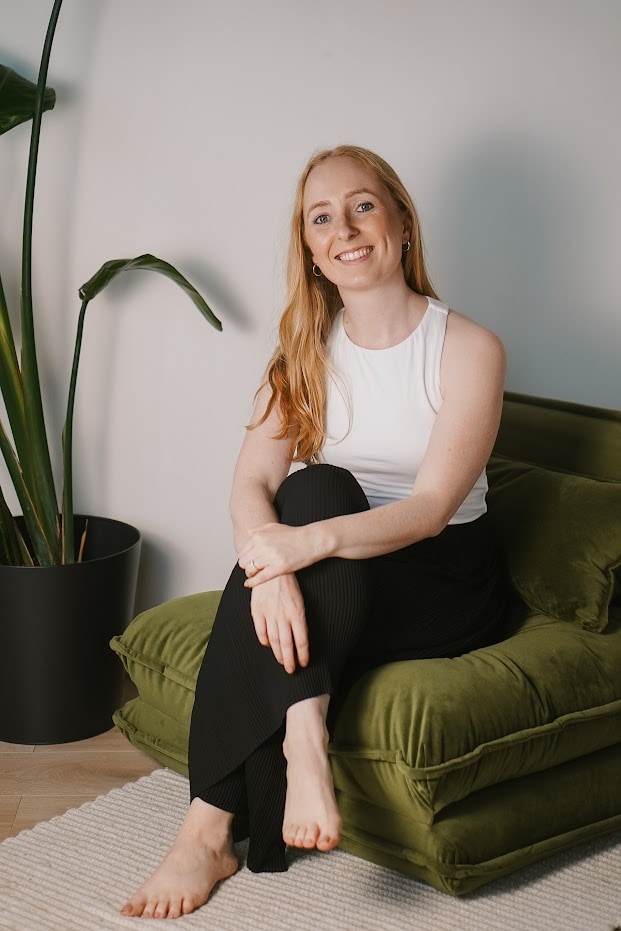If you enjoy practicing yoga, you might find it difficult to fit it into your routine alongside other forms of exercise like a gym programme or a sport you enjoy. So what should you prioritise? How much time should you spend on yoga vs other forms of exercise?
The answer isn’t clear since yoga styles vary enormously!
Practices like Yin or Restorative involve very little physical movement, but the benefits are in resetting your nervous system, creating calm and in some cases improving your flexibility.
Practices like Vinyasa or Ashtanga yoga are more dynamic and energising, with a strong focus on improving your flexibility, but tend not to include aerobic work.
To give you some general guidance, I’ve put together a list of what to look for in your exercise plan.
Critically, I do not want you to feel overwhelmed by this list! Some exercise is better than no exercise, and some more exercise is (generally) better. But it can help to think about the different types of sports, gym exercise and yoga practices that you do and whether you are covering these elements in your practice.
Consider whether your exercise programme does the following…

1. Your exercise should improve your strength
This doesn’t necessarily mean weight training. There is a huge amount of strength we can gain through bodyweight training alone. Equally, bodyweight training tends to prioritise push movements, meaning your muscles are being used to push rather than pull. It makes sense when you think about it – how can you use your bodyweight to pull anything?! So, some weight training can help with this.

2. Your exercise should improve your mobility
Let me first clarify what I mean by mobility, because I know that it can be confusing and some fitness professionals use the words interchangeably. The simplest definitions I’ve found are…
Flexibility is defined as “the ability of a muscle or muscle groups to lengthen passively through a range of motion”.
Mobility is the “ability of a joint to move actively through a range of motion”.
So, a muscle may be flexible, but in order to be mobile there needs to be stability at the joint as well. In fact, to increase your mobility, you often need to first stabilise the joint, which means you need to improve strength.
Ultimately, you want to make sure that your exercise programme improves your usable range of motion at the joints, not just passively be able to go into a deep stretch.

3. Your exercise should improve your ability to balance
This is critical in preventing falls as you get older and is a functional skill you need in your life. I’m sure we all want to be able to put our own socks on, tie our own shoelaces, and reach for items on a high shelf without wobbling over! No matter your age, the best time to start practicing your balance skill was yesterday, and the second best time is today.

4. You should move in all planes of motion
This one is a bit more technical, but stick with me here. The planes of motion are the directions your joints can move in. There are 3 planes of motion, which can be summed up as:
- Forward & Backward Movements
- Side to Side movements
- Twisting movements
Certain sports predominantly use only of these 3 planes. For instance, cycling is a fantastic sport & a great form of cardio fitness, but it moves joints forward and backward only.
In cycling, your hips flex and extend, and your upper body is mostly still, or it leans forward or backward. You may twist your upper body to check behind you, but mostly you look forward, and you don’t move side to side apart from a little rocking motion.
So, if you’re a cyclist, you might want to add in another form of exercise that utilises all 3 planes of movement.

5. You should boost your heart rate
Exercise that boost your heart rate is often refered to as ‘Cardiovascular exercise’ or cardio for short, or you might have heard ‘aerobic exercise’ used too.
Ultimately, these are types of exercises that ramp up your heart rate and your breathing. They are high-energy forms of exercise and would include things like running, cycling, or HIIT classes.
Does yoga cover all 5 of these elements of exercise?
You might be surprised to hear that it can! But of course, it depends on the yoga class.
In LYT Method Yoga, which is the style of yoga that I teach, all 5 elements are covered. My classes have a strong focus on strengthening the body and using active mobility drills to improve your usable range of motion – I use very few passive stretches.
All of my classes incorporate elements of balance training – things like warrior 3, tree pose, and even physio-inspired movements such as tandem walks and gait pattern training where it helps my clients.
All of my classes include movements in all planes of motion, and I consciously plan the classes to make sure these are all covered, even for beginners!
Most of my classes include some element of cardio, that increases the heart rate. This is often in the form of plyometric work, which increases the heart rate, but would not technically be considered aerobic activity. Plyometric (or plyo) refers to jumping movements, such as squat jumps.
What I love about LYT Method Yoga is that it is a one-stop-shop for your fitness that hits on all of these 5 elements of exercise in a short period of time. It is an efficient and effective way of cross-training for other sports, but also is a fantastic form of practice as a stand-alone. If you are short on time, you can feel confident that each practice will have a multitude of benefits for your body.
LYT Method Yoga also helps to improve your posture, by bringing your joints into better alignment over time. You can find out more about the benefits of improving your posture here.
Do other styles of yoga cover all 5 elements of exercise?
In other styles of yoga, there may be a combination of the above elements, so you may want to combine the workout with another form each week to ensure you are hitting on all elements.
It’s also important to recognise there are other benefits to different styles of yoga which aren’t listed here. For instance, yoga can help with relaxation and stress release. When you move in connection with the breath, you improve your brain’s ability to focus and be present in the moment, which can in turn help you to be more mindful in your day-to-day life.
Yoga can also help you to connect to your sense of inner strength and confidence – perhaps not part of the criteria for a good exercise plan, but a critically powerful benefit that is worthwhile to you.

Unlock your full potential & embrace the transformative power of movement
The question of whether yoga can be your only exercise depends on the style of yoga and your individual fitness goals.
While some styles, like Yin or Restorative, focus more on resetting the nervous system and improving flexibility, dynamic styles like Vinyasa or Ashtanga offer strength and flexibility benefits without so much aerobic work.
To create a well-rounded exercise plan, it’s important to consider all 5 elements, which were: strength, mobility, balance, movement in all planes, and cardiovascular fitness.
LYT Method Yoga, for example, covers all these elements in a time-efficient manner, making it an excellent choice for both cross-training and standalone practice.
However, no matter the form of movement you choose, the key is consistency and finding joy in what you do. The best form of exercise is the one that you actually DO!
And remember, incorporating regular movement throughout your day is crucial for countering sedentary lifestyles. Your exercise or yoga practice is only one part of your day, but what you do for the remaining 23 hours is just as important.
Moving regularly throughout the day is one of the most important things we can do to counter our increasingly sedentary lifestyles, and it won’t take long for you to see the huge benefits that can be gained from regular movement. (I always recommend using your lunch break to go out for a walk – find out more here)
So, embrace the transformative power of movement, and you’ll soon witness the remarkable benefits it brings to your overall well-being.




